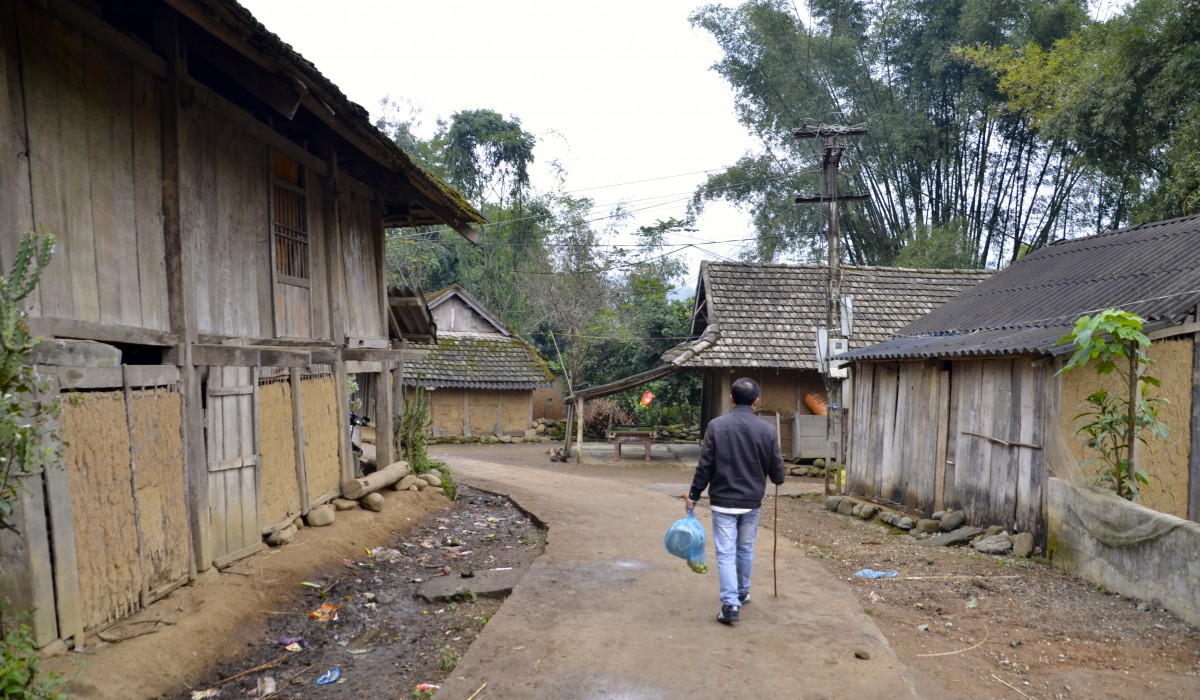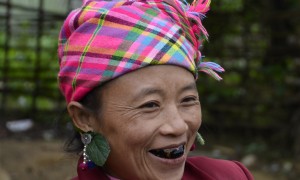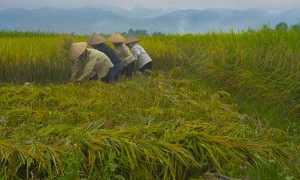I’m not sure where this comes from but I’m fascinated and always have been with the way people live–functionally and aesthetically. Obviously resources–financial and others play a huge factor– but the basic need for shelter and how it is met communicates so much about one’s priorities.
I’m drawn to understand what those priorities are and how they are met.
Last winter I had a chance to visit some homes of the Minority Tribes in North Vietnam, looking at how these people gather their families together, meet their basic needs with very limited resources and protect themselves against nature’s elements.
We were there in January–the Vietnamese winter–and a particularly cold, wet and miserable time. They only have snow once every other year or so and we happened to hit one of those times. While we didn’t see much snow, it felt like we could have a white out at any minute. Our guide Hoang said the cold weather is particularly difficult for the people here. One year much of the livestock died because they didn’t understand the importance of protecting them.
The homes we were fortunate to visit had mud floors, open fires, no running water and very limited protection from the elements. Frequently the sleeping areas were delineated with large curtains of fabric, sometimes in beautiful colors and embroideries, reminding me that people all over the world have a need to be surrounded by beauty.
 I was amazed with the primitive areas for cooking. How did these women manage?
I was amazed with the primitive areas for cooking. How did these women manage?
Some of the houses had small sitting areas with elaborate shelf units–we’d call entertainment centers–with a TV, a few photos and special items. I was sorry that I couldn’t speak the language to be able to ask the history of some of the small items. In several cases we were served tea in special china cups. I felt honored to be welcomed so graciously.
We saw overhead storage areas for the family rice and produce. These are self sufficient people, producing their own food. It was interesting to frequently see a large loom taking a prominent space in or under the home, speaking to the role of weaving and embroidery in the family life. We were told that women were expected to make new clothes for everyone in the family for TET, or Lunar New Year.
In some villages we saw homes built up on stilts, a protection from wild animals and snakes, while providing a space for the family’s livestock to live. In the photo below, you can see a small shed behind the house for making rice wine, also an important part of TET.
And finally the “signs of the times” images. We saw children gathered around TV’s in huts with bare dirt floors, no running water or modern conveniences. And if you look closely you’ll see a young lady, tending the family laundry and texting on her cell phone at the same time.























Comments
1 CommentKathy
Apr 28, 2013Your photography is incredible! It blows my mind to see the poverty and primitive conditions and then see the TV and cell phone!